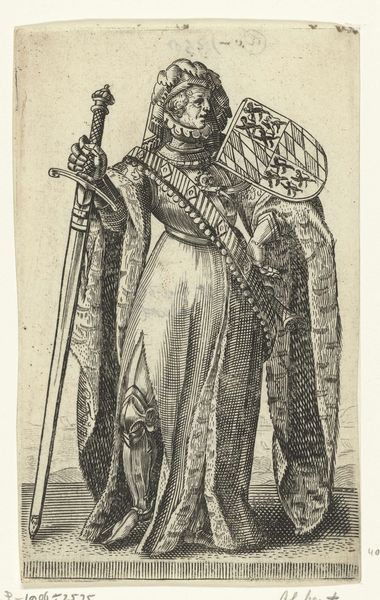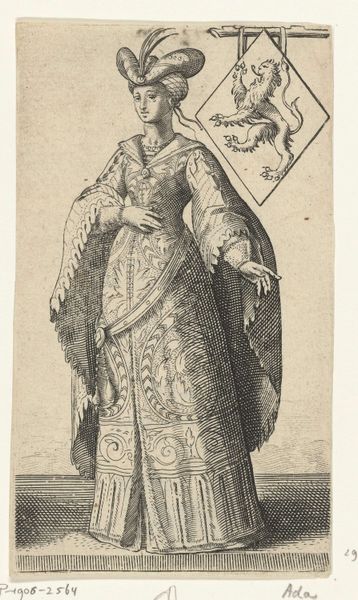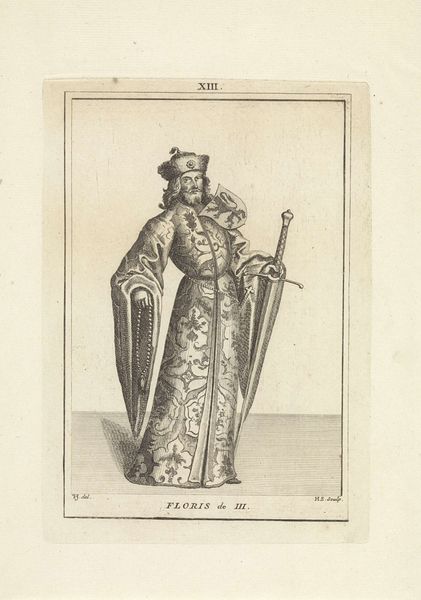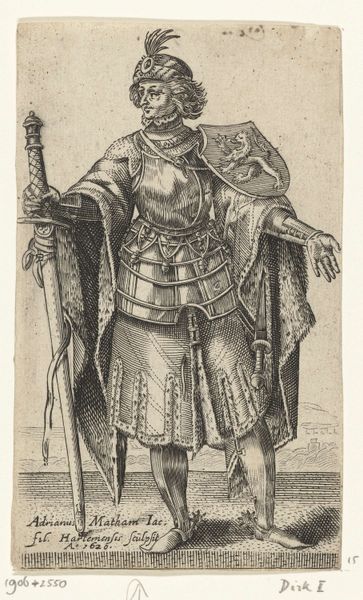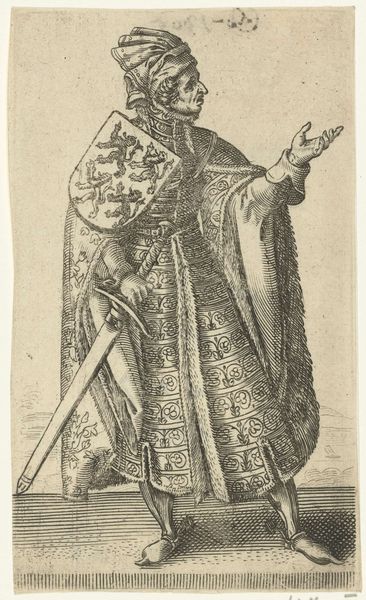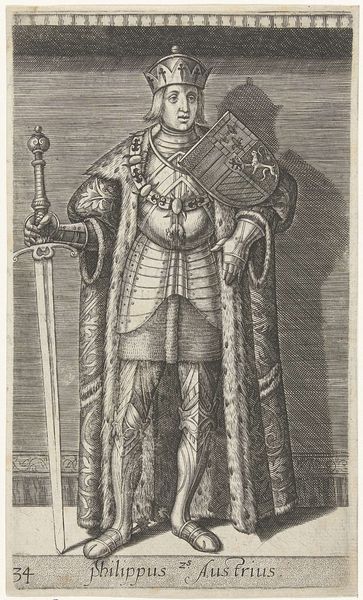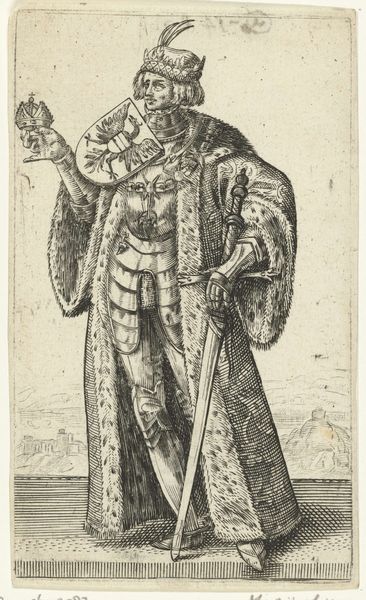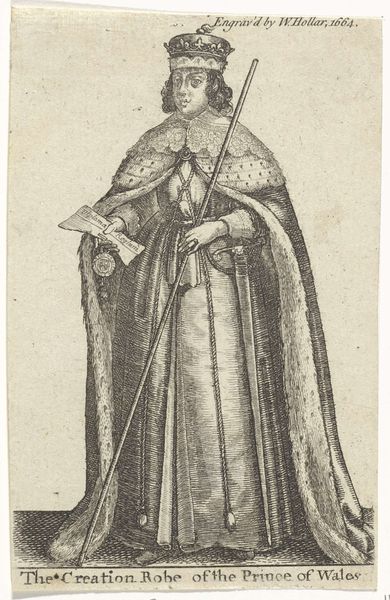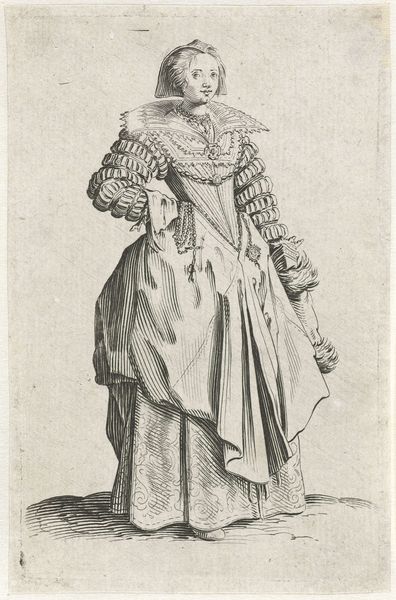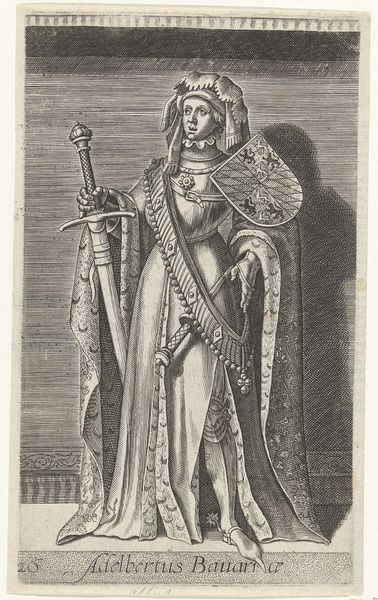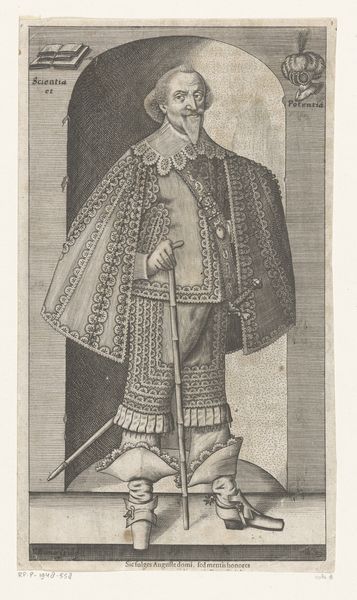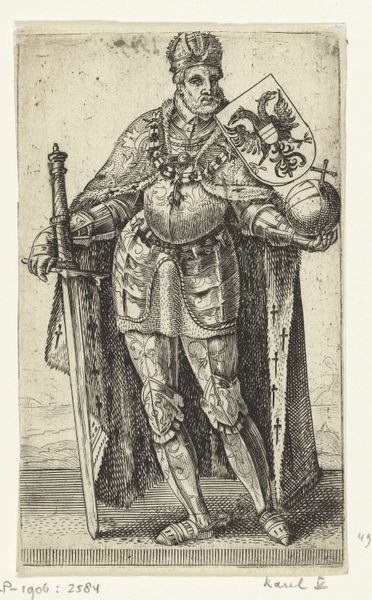
Portret van Isabella Clara Eugenia, infante van Spanje before 1601
0:00
0:00
print, engraving
#
portrait
# print
#
figuration
#
line
#
history-painting
#
northern-renaissance
#
engraving
Dimensions: height 192 mm, width 117 mm
Copyright: Rijks Museum: Open Domain
Curator: Oh, the ruffs of the era, just glorious! Before us we have a piece titled "Portret van Isabella Clara Eugenia, infante van Spanje," a print by Christoffel van Sichem I made before 1601. It’s currently housed here at the Rijksmuseum. Editor: The level of detail is stunning. Immediately I’m struck by the opulence, but with a somewhat severe dignity about her. Almost regal sorrow in those eyes. Curator: That sorrow, I think, stems from the cultural weight she bore. Isabella Clara Eugenia was, of course, a significant figure in her own right, the daughter of King Philip II of Spain, but look at how her dress communicates wealth, power, lineage, a veritable tapestry of dynastic importance. It echoes the weight of expectations, doesn't it? Editor: Absolutely. The formality is almost suffocating. You can sense the performative aspect of her image. It is definitely history-painting at its finest. Also, I find something charmingly awkward about the flat, almost schematic, rendering of the figure against the rudimentary perspective of the floor tiles. A naive grandeur, maybe? Curator: Indeed, this Northern Renaissance aesthetic balances ornate detail with a flattened perspective which is a common trait for the period, placing the emphasis on conveying information about Isabella, about her status, rather than mimicking photographic realism. Each pearl, each embroidery detail is meticulously rendered. It's about presenting a symbol of power. Notice, too, her austere gesture, barely holding her gloves. The print served a purpose: reinforcing the idea of royalty and reminding us, centuries later, of that construction. Editor: And she embodies that representation perfectly, doesn’t she? Caught between private feeling and her very public role. It’s really striking, now that I see the symbols you are talking about, that the print succeeds in making that burden legible. Curator: It’s why such portraits, while stylized, still resonate. They capture not just a likeness but a specific moment in the ongoing narrative of power, and how identity is not merely an individual choice but a combination of inherited roles. Editor: Well, thanks for clarifying my impressions with such insightful observations. It has given me a completely different perspective. Curator: A pleasure. Hopefully this sheds a little light on the story behind this fascinating person portrayed, as it connects history, psychology, and the symbols with which we construct identity.
Comments
No comments
Be the first to comment and join the conversation on the ultimate creative platform.
